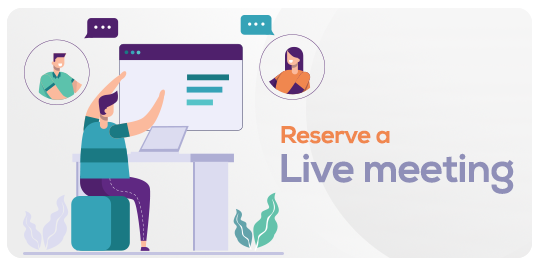About this course
Welcome to the course on Implementing an IoT Solution! In this comprehensive program, you'll delve into the world of wireless communication protocols, learning how to transmit and monitor data remotely using a variety of technologies and platforms. This course will empower you with the skills and knowledge needed to design, develop, and deploy IoT solutions effectively.
Course Duration:
This course spans four weeks, with three sessions per week, each session lasting two hours. The final week will be dedicated to project work, where you'll have the opportunity to apply your learning to real-world IoT projects.
What You’ll Learn:
Understanding of wireless communication protocols and their applications
Mastery of development boards and modules for wireless communication
In-depth exploration of radio frequency, Bluetooth, GSM, and Wi-Fi modules
Creation of Bluetooth mobile apps using MIT App Inventor and RemoteXY
Integration of GSM and Wi-Fi modules for remote data transmission
Utilization of cloud computing platforms as dashboards for data monitoring
Who This Course Is For:
This course is ideal for individuals interested in harnessing the power of wireless communication for IoT applications. Whether you're a student, hobbyist, entrepreneur, or professional looking to expand your skill set, this course is designed to accommodate learners of all levels and backgrounds.
How You’ll Learn:
Through a blend of theoretical lectures, hands-on demonstrations, practical exercises, and project-based learning, you'll engage in immersive learning experiences that facilitate a deep understanding of wireless communication concepts and techniques. Interactive discussions, case studies, and real-world examples will enrich your learning journey, providing you with valuable insights and practical skills applicable to real-world IoT projects.
Skills You’ll Learn:
- Proficiency in wireless communication protocols and technologies
- Hands-on experience with development boards and modules for IoT applications
- Mastery of radio frequency, Bluetooth, GSM, and Wi-Fi modules
- Ability to create Bluetooth mobile apps for remote control and monitoring
- Integration of GSM and Wi-Fi modules for remote data transmission
- Utilization of cloud computing platforms for data visualization and analysis
Requirements:
- Basic knowledge of electronics, programming, and IoT concepts (preferred but not mandatory)
- Access to a computer with internet connectivity for online learning sessions
- Basic knowledge in embedded and automation systems
- Availability for three sessions per week, each lasting two hours, over the course of five weeks
- Eagerness to actively participate in hands-on exercises and project work
Career Prospects:
Upon completion of this course, you'll be well-positioned to pursue various career opportunities in the rapidly growing field of IoT and wireless communication. Potential career paths include:
- IoT solutions architect
- Wireless communication engineer
- IoT product developer
- Embedded systems engineer
- Industrial automation specialist
- Electronics hardware engineer
- IoT consultant or entrepreneur
Prerequisites
Comments (0)
This introductory session lays the foundation for understanding various wireless communication protocols essential for transmitting and monitoring data remotely. Participants will explore four key transmission methods: radio frequency, Bluetooth, GSM, and Wi-Fi. Participants will gain insights into the strengths, limitations, and applications of each protocol, setting the stage for deeper exploration in subsequent modules. Also, this session will cover development boards with WiFi and Bluetooth features used in Internet of Things (IoT)
This session is embedded with two lessons. These are the introduction to RF modules and the 433MHz transceiver.
In the first lesson, participants will be introduced briefly to rf modules, their working principles and some commonly used examples such as 433MHz transceiver, the HC12 transceiver and the nRF24L01 module.
In the second lesson, participants will delve into the 433MHz transceiver, a widely used RF module for low-power, short-range wireless communication. Participants will learn about the operational principles of the 433MHz transceiver, including frequency modulation, transmission range, and data encoding methods. Participants will gain proficiency in interfacing the 433MHz transceiver with microcontrollers, understanding how to establish reliable communication links and transmit data wirelessly in embedded systems and IoT applications.
This session is in two parts;
The first lesson focuses on the HC12 transceiver module, renowned for its long-range communication capabilities in the 433MHz frequency band. Participants will explore the features and functionalities of the HC12 transceiver, including power settings, baud rate configuration, and error correction mechanisms. Participants will also learn how to interface the HC12 transceiver with microcontrollers, optimizing transmission parameters for robust and efficient data communication over extended distances.
In the final lesson, participants will explore the NRF24L01+PA+LNA module, known for its high-performance wireless communication in the 2.4GHz frequency band. Participants will delve into the advanced features and capabilities of the NRF24L01+PA+LNA module, including power amplification, low noise amplification, and multi-channel operation. Participants will learn to interface the NRF24L0+PA+LNA module with microcontrollers, optimizing settings for reliable data transmission in environments with high interference and noise levels.
In this session, participants will explore GSM modules, enabling long-range wireless communication via cellular networks. Participants will delve into components such as the SIM800L GSM module and SIM900L development shield, learning how to interface them with microcontrollers and harness their capabilities for remote data transmission.
This session focuses on Bluetooth modules essential for short-range wireless communication. Participants will learn about HC05, HC06, and ESP32 Dev Board, understanding their integration with microcontrollers.
Building on the foundation laid in the previous session for Bluetooth. participants will learn how to design and create mobile application using remoteXY and MIT app inventor to enhance remote monitoring and controlling of their devices
This session expands participants' knowledge on Wi-Fi modules, facilitating high-speed wireless communication over local networks. Participants will explore Wi-Fi modules such as ESP8266-01 and ESP32 Dev Board, mastering their interfacing techniques with microcontrollers and understanding their functionalities for wireless data communication.
This session includes lessons form Blynk and remoteXY.
In this lesson, participants will explore both cloud platforms designed for IoT projects. Participants will learn about features used in both platforms and how to use them to create meaningful dashboards to remotely monitor and control their circuits.
This session includes lessons form Arduino IoT cloud and ThingSpeak.
In this lesson, participants will explore both cloud platforms designed for IoT projects. Participants will learn about features used in both platforms and how to use them to create meaningful dashboards to remotely monitor and control their circuits.









